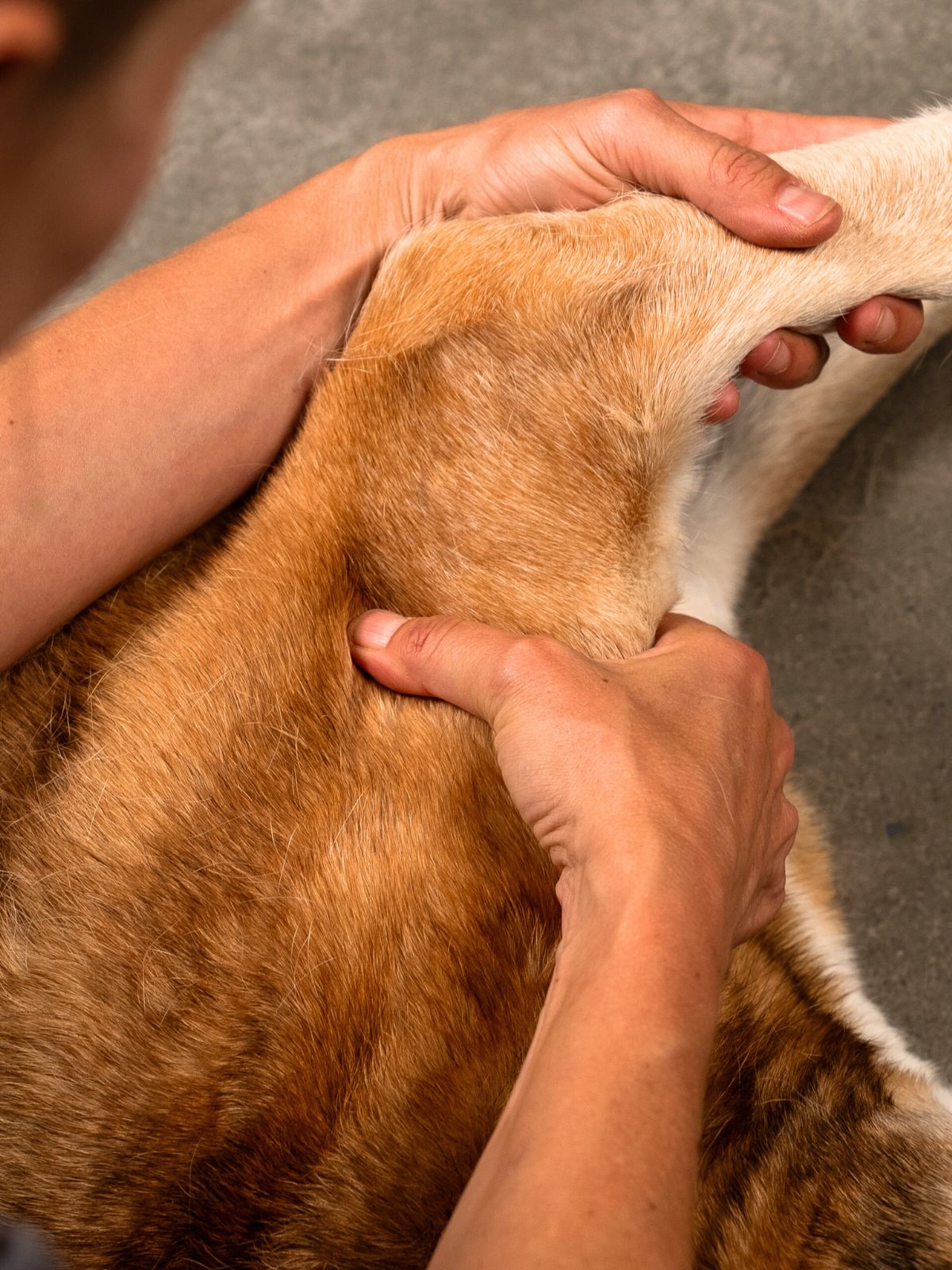Lameness In Dogs
In-Home Canine Rehabilitation to Assess, Treat, and Resolve the Underlying Causes of Lameness in Dogs
Understanding Lameness in Dogs
Lameness in dogs is a clinical sign—not a diagnosis—that indicates pain, weakness, or mechanical dysfunction affecting one or more limbs. It may develop gradually or appear suddenly and can range from subtle weight-shifting to complete non-weight bearing. Causes vary widely and include orthopaedic injuries (such as cruciate ligament rupture or soft tissue strain), degenerative joint disease, neurological disorders, and compensatory overload from other musculoskeletal conditions.
Dogs with lameness may exhibit signs such as altered gait, limping, toe-touching, stiffness after rest, muscle asymmetry, or reluctance to walk, climb stairs, or jump. In some cases, especially with chronic or bilateral issues, lameness can be difficult for owners to detect without clinical evaluation.
At Paws4Paws, we begin with a thorough in-home functional assessment to identify the source and nature of the lameness—whether structural, soft tissue, neurological, or compensatory. Our goal is not only to manage symptoms but to address the underlying dysfunction through targeted, evidence-based rehabilitation that improves comfort, restores limb use, and prevents further decline.
How We Address Lameness in Dogs
Effective treatment of lameness in dogs requires more than rest or pain relief—it involves a structured rehabilitation plan tailored to the root cause of the dysfunction. At Paws4Paws, we deliver in-home therapy programs that address both the primary issue and any secondary complications, such as muscle atrophy, joint stiffness, or compensatory movement patterns.
Our approach is informed by a detailed clinical assessment, including gait analysis, postural evaluation, palpation, range of motion testing, and neurological screening where appropriate. From there, we design a multimodal therapy plan that may include:
-
Manual therapy to address soft tissue tension, myofascial restrictions, and joint stiffness
-
Therapeutic exercise to rebuild muscle strength, improve weight-bearing, and restore movement control
-
Laser therapy (PBMT) to reduce inflammation and pain in affected joints, tendons, or muscles
-
Proprioceptive and motor control training to improve coordination and balance
-
Home exercise programs to reinforce clinical progress and encourage safe, functional use of the affected limb
-
Owner education on activity pacing, environmental setup, and strategies to prevent recurrence
By restoring strength, symmetry, and neuromuscular control, rehabilitation helps resolve lameness, prevent secondary injury, and support long-term mobility in dogs of all ages and activity levels.
Why Rehabilitation Matters
When lameness is not addressed promptly and appropriately, it often leads to a cascade of secondary problems—such as muscle atrophy, joint stiffness, compensatory strain on other limbs, and postural imbalance. Over time, these changes can complicate the primary condition, prolong recovery, and increase the risk of chronic pain or further injury.
Early rehabilitation helps:
-
Identify and treat the root cause of lameness before it becomes chronic
-
Prevent muscle disuse, loss of joint mobility, and long-term gait abnormalities
-
Improve weight distribution and reduce mechanical overload on unaffected limbs
-
Interrupt compensatory movement patterns that contribute to secondary strain
-
Restore your dog’s comfort, confidence, and safe participation in daily activities
Whether your dog’s lameness is due to a recent injury, surgery, or gradual onset of pain, a structured and individualised rehabilitation plan can significantly improve clinical outcomes and enhance quality of life.


